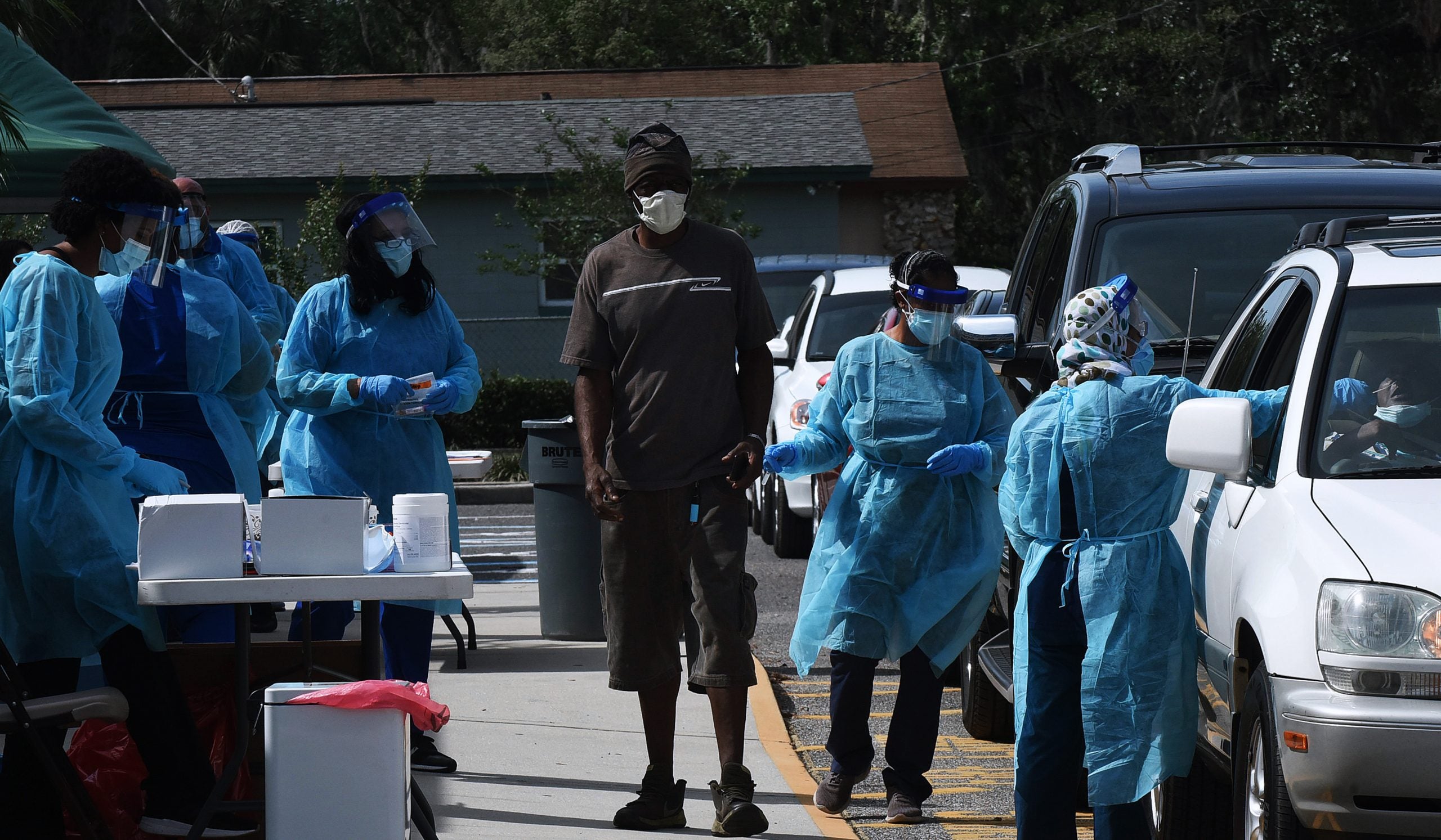Over the past couple of months, we’ve watched as a pandemic has taken over the country while the Trump administration continues to ignore the advice of public health experts. Every day we learn more about the virus, the toll it’s taking on communities and the associated economic fallout. While all people are at risk, we now know that people of color, particularly Black people, are bearing the brunt of the effects of COVID-19. Black workers are overrepresented as essential workers, have a prevalence of underlying health conditions and are more likely to receive unequal treatment in the health care system. Recent data show that Black people account for one third of COVID-19 hospitalizations while making up only 13 percent of the U.S. population.
This is no coincidence, but the result of decades of discriminatory policies and practices that have resulted in persistent racial and economic disparities. Still, some have suggested that the individual choices of Black people are what makes them vulnerable to the effects of COVID-19. As Keeanga-Yamahtta Taylor explained in The New Yorker, “Racializing poverty helps to distract from the systemic factors at the foundation of both racial and economic inequality. Instead, there is an overabundance of attention placed on the diagnosis and repair of supposedly damaged African-Americans.”
By ignoring the structural causes of these disparities is to accept them as normal—even necessary—and frees the government from the responsibility of repairing past harms inflicted by its own policies. So what does it mean when leaders say they are ready to get back to normal if normal includes racial disparities? Economic and racial inequality is so deeply ingrained in our structures that “normal” has meant a Black unemployment rate consistently twice that of White workers. Normal has meant segregated schools, unaffordable housing and overpolicing. Normal has meant greater exposure to environmental hazards and barriers to health care. Normal is not good enough.
Congress cannot pass relief bills that don’t account for systemic issues. We need a long-term recovery that centers on racial equity. From natural disasters to economic downturns, we know that when recovery efforts do not focus on achieving racial equity such efforts only serve to reinforce persistent disparities.
Following Hurricane Katrina, which displaced thousands of New Orleans residents, the state of Louisiana distributed federal funding to assist homeowners based on their pre-storm home values—an assessment fraught with racial bias—rather than the cost of repairs. As a result, Black homeowners received an average of $8,000 less than White homeowners. By proposing this seemingly race-neutral policy, leaders reinforced existing disparities that devalue Blackness and hinder Black wealth-building.
If people of color continue to face barriers to economic security and well being, our economy will always be fragile to future shocks.
And following the Great Recession, the recovery helped White families rebound while many Black families never recovered. Over the past decade, the racial wealth gap has expanded due in large part to the recession, and in many parts of the country, the unemployment rate for Black people was higher last year than during the height of the crisis. And yet, the recovery effort ended not long after it began, and leaders praised the strength of the economy up until this pandemic.
“This [current] crisis is also exposing just how dangerous it is to have a labor market that is shaped by race-based inequality,” explained Angela Hanks of the Groundwork Collaborative. “Returning to the ‘status quo’ economy—a labor market that, even in the best of times, was on shaky footing—will not solve this crisis, nor prevent the next.” If people of color continue to face barriers to economic security and well being, our economy will always be fragile to future shocks.

Our recovery’s success cannot be measured against pre-COVID-19 conditions where racial disparities were ignored, tolerated, or even expected. We must design a long-term recovery effort that brings our country out of this crisis stronger than we were going into it. Recently, PolicyLink released principles for a “commonsense, street smart recovery”—one grounded in proven solutions that are responsive to community needs. Principles include: centering racial equity; putting people first over bailing out corporations; investing in the physical and social infrastructure serving community needs; building an equitable economy that benefits workers; and protecting community voice and power by ensuring the government is accountable to the people, particularly at the ballot box.
While elected officials have a responsibility to represent all people, centering racial equity is not a zero-sum game. Ensuring all people live in a society where they can participate, prosper and reach their full potential requires recognizing that the path to getting there is different for different groups based on our current systems. Intentional investments in the most vulnerable—while the moral thing—is the financially smart move as inequality hinders economic growth, undermining the strengthening of the nation as a whole.
For decades the federal government invested in the strength and stability of suburban, White communities while giving local governments license to exclude, neglect, and even demolish Black communities. Asking for intentional investments in communities of color is not asking for special treatment. It is asking for the types of investments that have benefited White communities to finally be made available to everyone. As we continue to address the immediate needs of this crisis, we must also plan for the long road to recovery, which requires finally addressing the enduring crisis of racial and economic inequality. Normal was never good enough.
Tracey Ross is a writer and advocate who leads federal policy and narrative change efforts for PolicyLink, a national research and action institute advancing racial and economic equity.